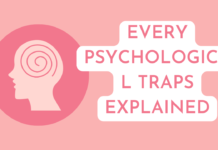Welcome to our comprehensive blog series, “Mastering English Grammar: Your Ultimate Guide to Language Precision.” Whether you’re a non-native English speaker aiming to enhance your language skills or a native speaker seeking to refine your grammar prowess, this blog is your go-to resource. We understand that mastering English grammar can be challenging, with its countless rules, exceptions, and nuances. However, with our expert guidance and practical examples, we aim to simplify this intricate subject and empower you to communicate with clarity and confidence.
In this blog series, we will delve into various aspects of English grammar, unraveling its mysteries one step at a time. From the basic building blocks of sentence structure to the finer details of punctuation, we’ll explore everything you need to know to become a proficient communicator. Each blog post will focus on a specific grammatical concept, providing clear explanations, useful tips, and engaging examples to help solidify your understanding.
Contents
- The English Alphabet
- Writing the Alphabet 1
- Writing the Alphabet 2
- Personal Details – Completing Forms
- Basic English Written Test
- Essential Spellings
- Vocabulary Test (blank copy)
- Just Vowels – Days, Months and Seasons 1
- Just Vowels – Days, Months and Seasons 2
- Days of the Week
- Months of the Year
- Understanding Dates 1
- Understanding Dates 2
- Common Irregular Verbs – Present Simple Tense
- Common Irregular Verbs – Past Simple Tense
- Common Irregular Verbs – Present Continuous Tense
- Using Capital Letters 1
- Using Capital Letters 2
- Basic Sentence Punctuation 1
- Basic Sentence Punctuation 2
- Question Forms Using Verb ‘to be’ (Present Simple Tense) 1
- Question Forms Using Verb ‘to be’ (Present Simple Tense) 2
- Question Forms Using Verb ‘to be’ (Present Simple Tense) 3
- Question Forms Using Verb ‘to do’ as an Auxiliary Verb (Present Simple Tense) 1
- Question Forms Using Verb ‘to do’ as an Auxiliary Verb (Present Simple Tense) 2
- Question Forms Using Verb ‘to do’ as an Auxiliary Verb (Present Simple Tense) 3
- Question Forms Using Verb ‘to have’ as an Auxiliary Verb (Present Perfect Tense) 1
- Question Forms Using Verb ‘to have’ as an Auxiliary Verb (Present Perfect Tense) 2
- Question Forms Using Verb ‘to have’ as an Auxiliary Verb (Present Perfect Tense) 3
- Elementary Homophones 1
- Elementary Homophones 2










